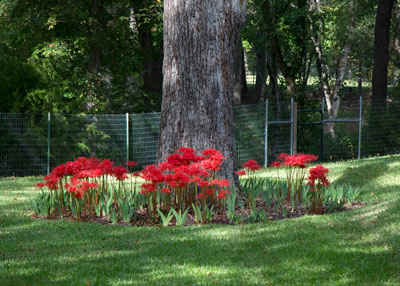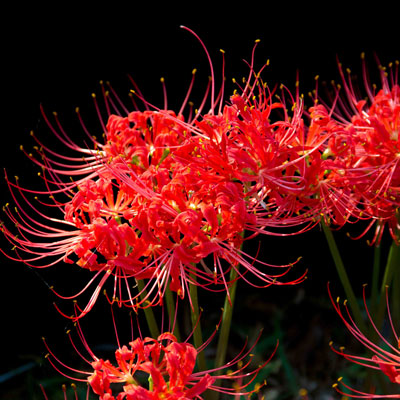Plant of the Week: Spider Lilies
This has been a really unusual year. Fall-flowering bulbs have thrown us some curve balls, and this one is a fine example. I took this photo only two days ago along a county road southeast of McKinney.
As evidence of how wacky their bloom season has been this fall, I looked back at prior issues of e-gardens, and we showcased spider lilies clear back in late August. So if you feel like any of this is strangely familiar, that explains why.

Photo: Spider lilies got us to turn around as we were driving southeast of McKinney just a couple of days ago. Yes – they’re still coming into fall bloom!
The plant is known by botanists as Lycoris radiata. It’s in the Amaryllis plant family, and it’s native to Japan. It grows from a bulb that’s a bit shy of being the size of a golf ball. They’re among the more commonly sold bulbs in local independent nurseries across Texas in late summer (best time for planting them), or you can mooch a start from friends who are willing to share.

Spider lilies in bloom have always reminded me of a big fireworks show.
The flowers show up first, which leads to their far less common name of “surprise” lilies. The blooms are followed by dark green leaves that persist all winter and into the spring. Then the leaves die down and the plants are dormant until late summer rains trigger their fall growth and flowers.
Spider lilies do best where they can grow undisturbed for many years. They thrive in well-draining soils and under high shade of large trees. Honestly, they require almost no supplemental water or fertilizer. They’re just that easy.
Their mature height in bloom, as you can see from my photo, is 15 to 16 inches. Bright red spider lilies are the showiest. Resist the urge to try unusual colors. While they are occasionally available, they’re dull thuds compared to these beauties.
